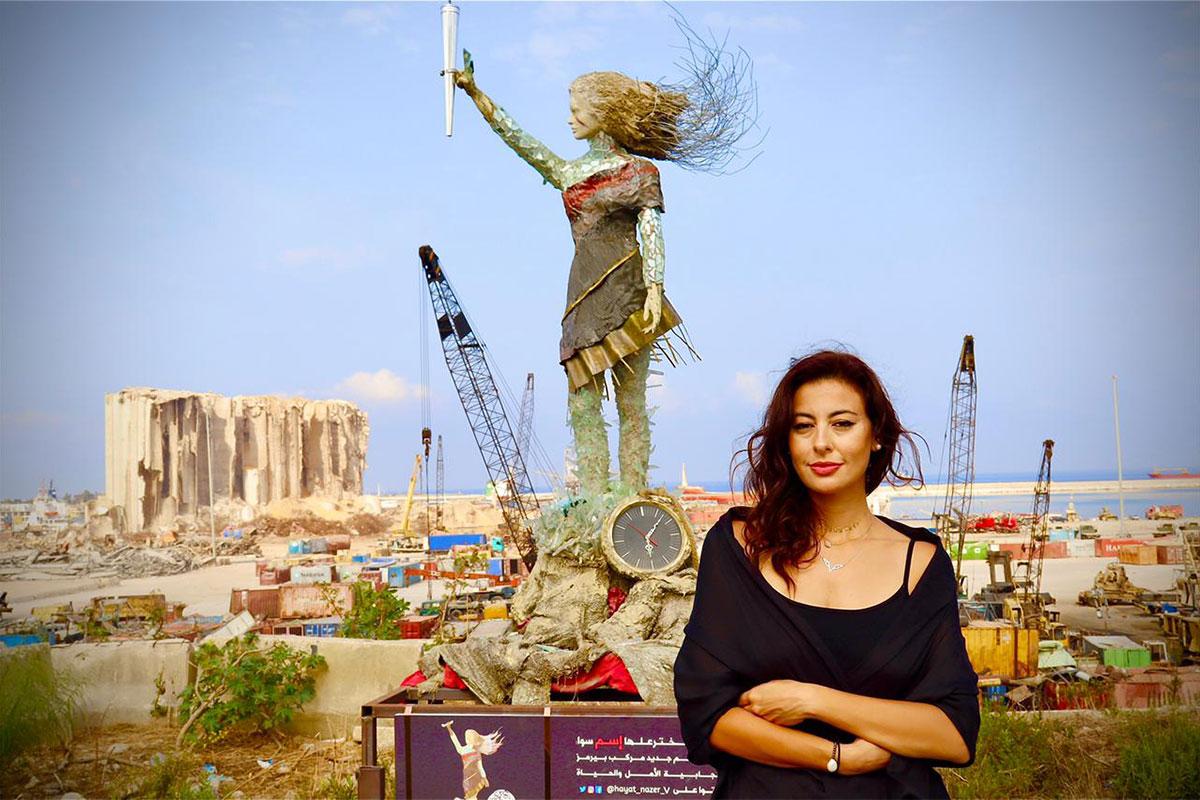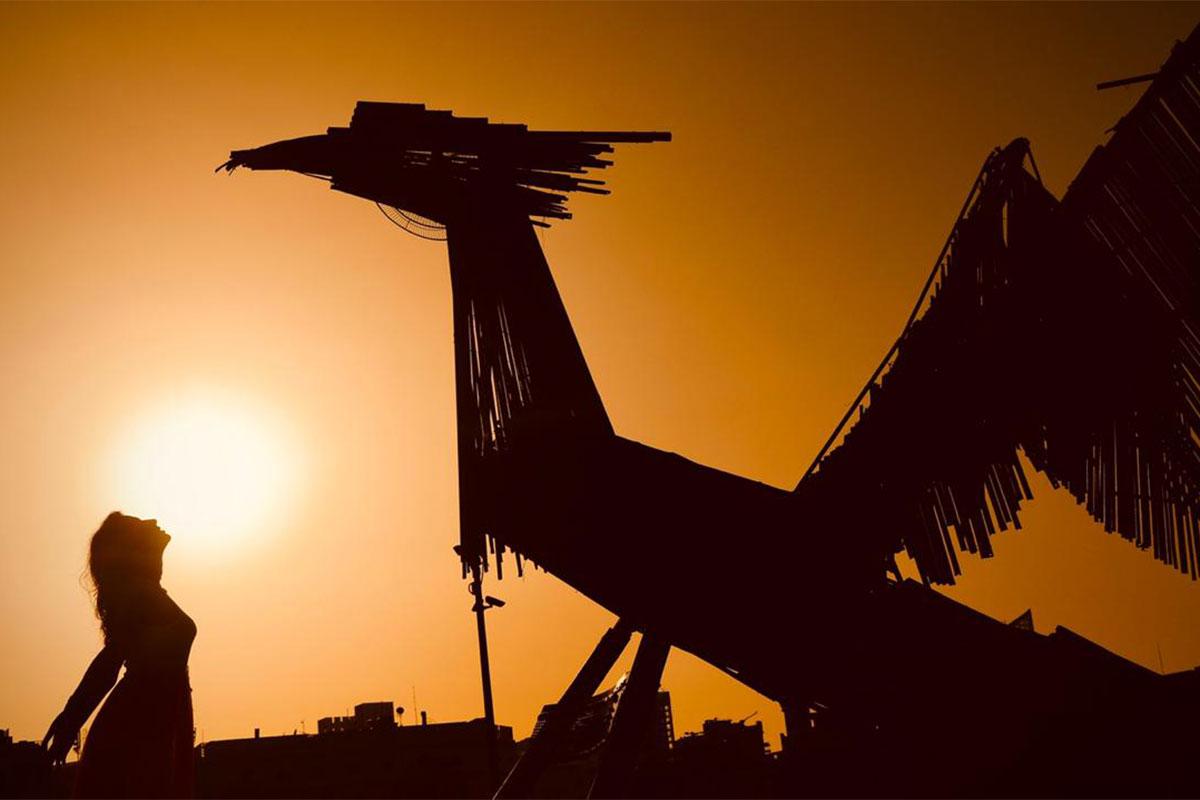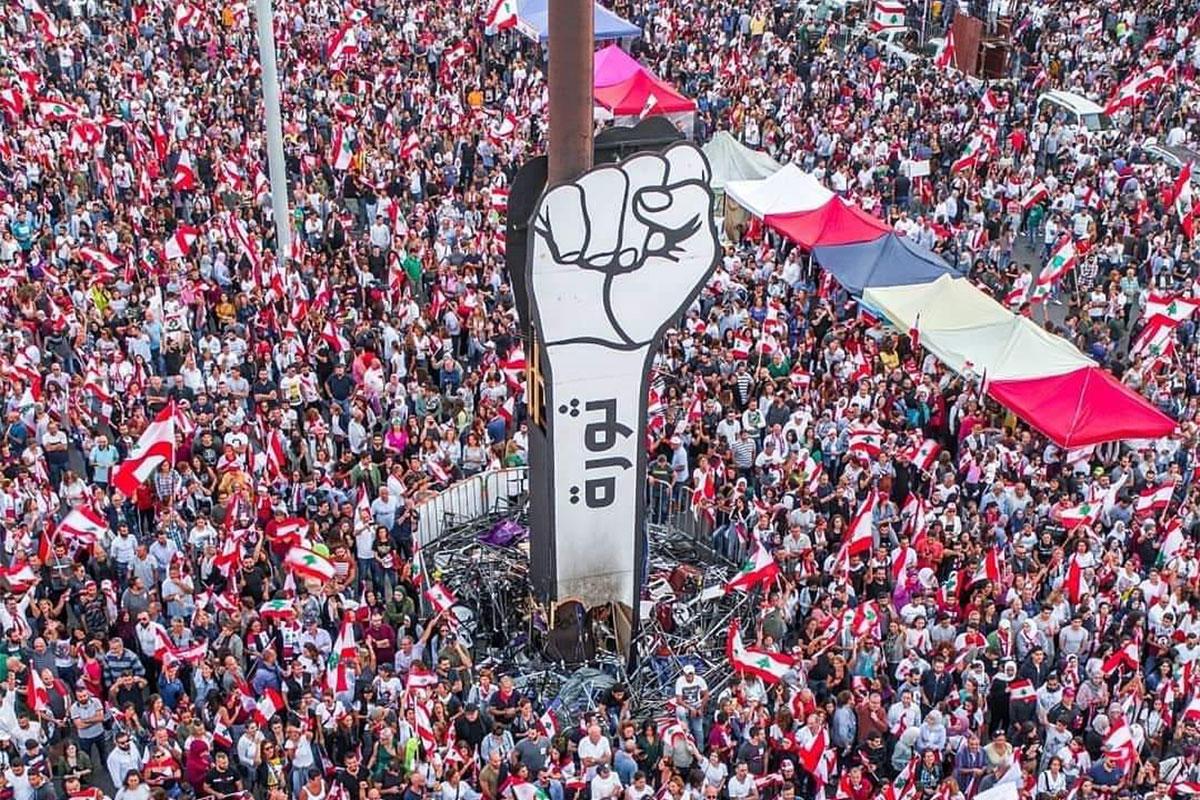On Fighting Back and Finding Truth
How two LAU alumni have reckoned with Lebanon’s new realities through street art.
Days after Beirut’s August 4 Explosion, artist and alumna Hayat Nazer (BS ‘10) looked over the pile of wreckage she had collected while taking part in the cleanup efforts and made up her mind: she would build a statue to “fight back through art, inspire others and help tell our story.”
From shards of broken glass, twisted metal and debris rose a statue of a woman holding the Lebanese flag, wisps of hair flowing in the wind. At her feet, a clock had stopped at 6:08, the time of the explosion. “The movement in the woman’s hand, hair and legs reflects her desire to advance,” explained Nazer. “Never forgive, never forget, rise again, and keep on moving.” To name the sculpture, Nazer called on her Instagram followers for their suggestions and votes. The choice fell on Hayat Min Damar, life from ruins.
Creating this masterpiece was not the first time that Nazer had felt the urge to “fight back.” During the October 17 Uprising, and after protesters’ tents were destroyed by pro-government groups, Nazer used the broken metal rods and torn fabric to create an abstract phoenix – a sign that the revolution will endure and make a comeback.
Unfortunately, her phoenix was burnt to the ground, and as a precautionary measure, Nazer removed the woman statue from the Beirut Port for safekeeping. She hopes to create a large-scale, durable replica which can be safely put on display in Beirut, permanently.
A few meters away from where Nazer’s phoenix once stood, a much larger Revolution Fist bore witness to a series of assaults and controversies.
As Founder and Managing Director at Styro 3D, alumnus Tarek Chehab (2009-2010) followed the early hours of the uprising, his mind raced to come up with what kind of “props” his company could contribute. “During the first two days, we produced 50 cm-long polystyrene cedars and small fists,” he explained. “But a week later, we decided to produce and install the monument right in the center of Martyrs’ Square, which later became an icon of the revolution – something to be happy and proud about.”
Today, Chehab feels that associating any big moment with a physical monument gives it an identity and builds lasting impact. “It can give people something to keep in mind and strengthen the bonds between them,” he said.
Essentially, “memorials examine the past and help in social recovery and reconstruction by sometimes expressing injustice and the desire for revenge,” explained Assistant Professor of Practice and Interim Associate Chair for Art and Design Maria Bahous.
“By creating a memorial, artists – especially young ones – can explore memories and encourage collective learning, while raising important issues about social values, history and public memory,” she added.
From an academic perspective, Bahous shed light on how students are encouraged to contribute to the overall development of society, as well as develop their own critical thinking. Several examples of such contributions had been posted on the Arts and Design Department blog and Instagram page.
“Students draw inspiration from their surroundings and offer thoughtful critiques of the political, economic and social systems with the view of pushing toward social progress,” declared Bahous.
Indeed, Nazer believes that creating art helps her reckon with crises, illustrating how Hayat Min Damar had resonated with many of the survivors from the explosion who are still trying to come to terms with their ordeal. “I tried to encapsulate what we had been through – as if we managed to preserve a scream for it to keep shouting out the truth for generations to come – because in this country, we tend to forget [the truth],” she said.


